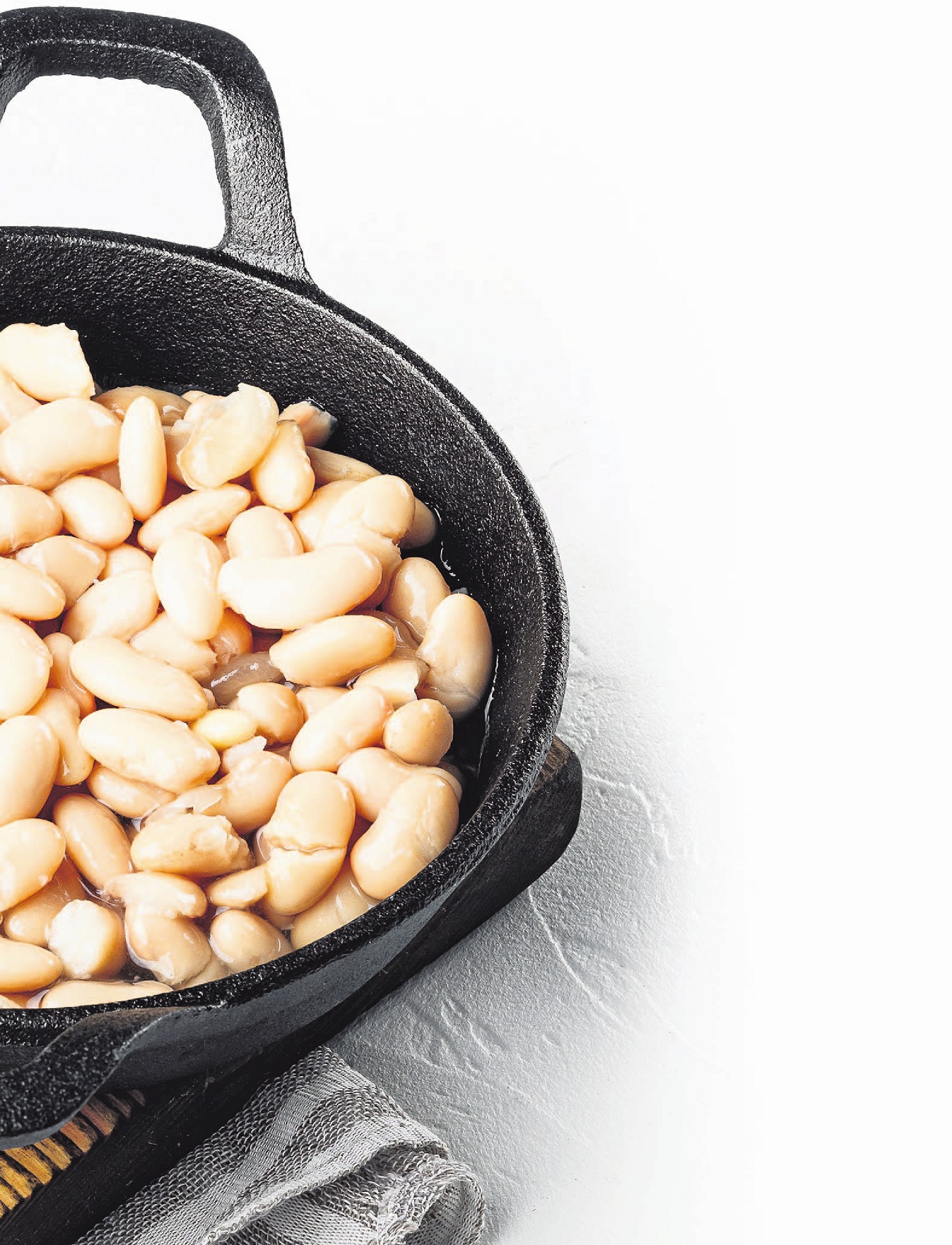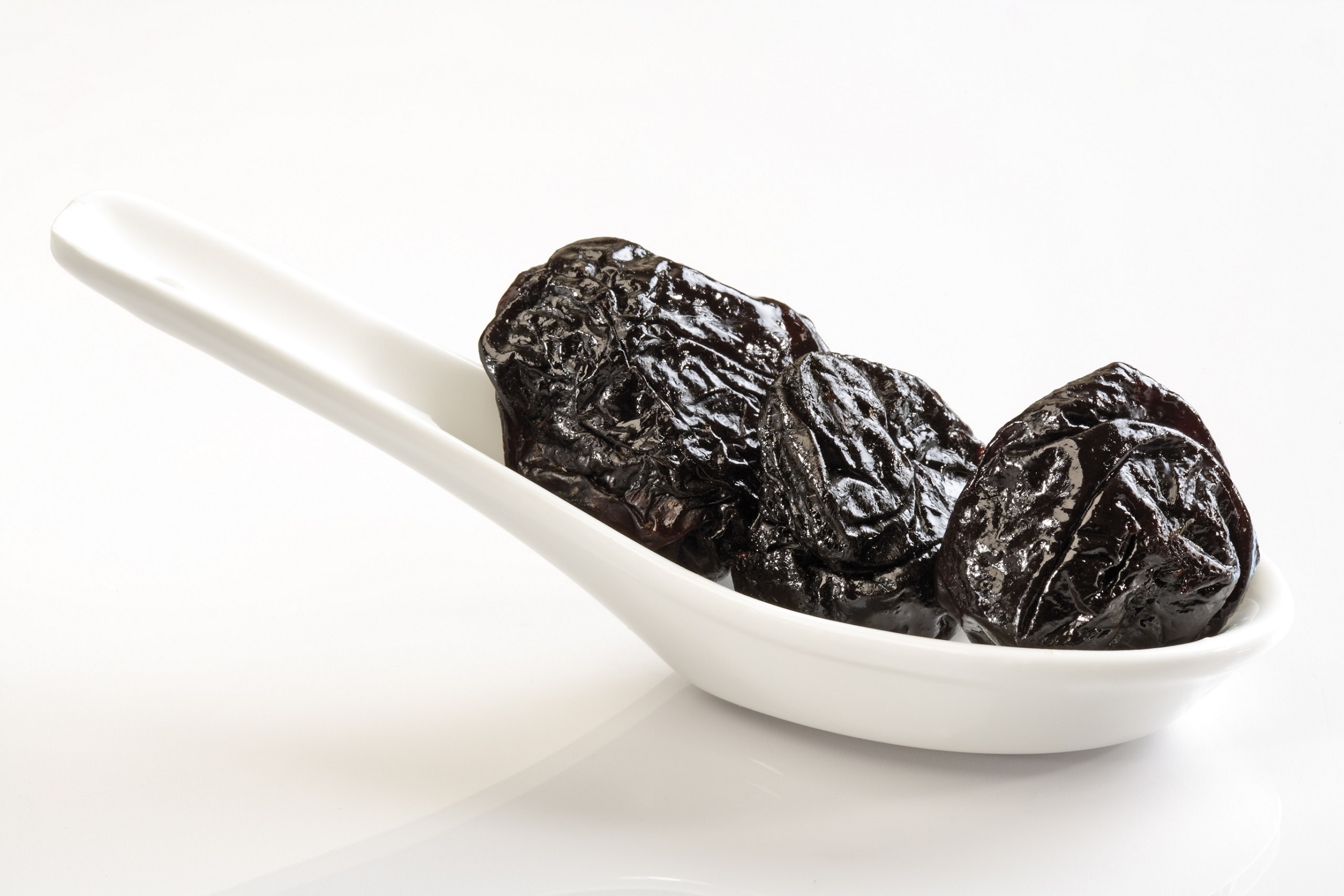
A quiet autumn afternoon with fig leaves falling outside the kitchen window and, far away, the scent of a neighbour’s bonfire. A golden autumn day lacking only the smell of a baking cake or tart. I immediately put the omission to rights with an almond frangipane.
A deliberately plain shortcrust, buttery but unsweetened, was rolled out and ushered into a tart tin, then filled with a mixture of almonds, dark chocolate and glossy prunes. It was just as toothsome the following day. A thick slice of tart shared its plate with a mound of ice cream. So, so good.
I spent so much time playing with tarts that dinner had to be a made-in-minutes job. Bottled beans and cabbages came to the rescue — the latter shredded and tossed with the simmering cannellini and their seasoning of garlic and dill.
Butter beans, cannellini and cavolo nero
Beans in jars are more plump and juicy than those in tins, but either works well here. It is essential to include some of the aquafaba — the bottling liquor. It adds a creamy quality without the need for any dairy produce.
Serves 2
150g cavolo nero
200g hispi (pointed) cabbage
2 plump cloves garlic
2 Tbsp olive oil
2 Tbsp dill
400g butter beans
250g cannellini beans
1 lemon
Method
Trim the tough ends of the cavolo nero stalks, then place the leaves on top of one another, roll tightly, then slice them into wide shreds, like pappardelle. Repeat with the pointed cabbage. Have a bowl of iced water to hand.
Put a pan of water on to boil and, when boiling, dunk the cavolo nero in, leave for 2 minutes, then lift it out and transfer to the iced water. When the water returns to the boil, repeat with the cabbage.
Peel the garlic, then crush to a paste with a good pinch of salt — use a pestle and mortar, but the flat side of a knife and a chopping board works, too. In a wide saute or frying pan, warm the oil and garlic paste. You don’t want the garlic to colour, so stir as it warms and softens. Finely chop the dill and stir into the garlic.
Tip the butter beans and cannellini together with their liquor into the pan and stir to coat them with the oil and garlic. Leave over a moderate heat, covered by a lid, for a few minutes until the beans are hot. Finely grate the lemon zest and squeeze the juice.
Season the beans generously with salt and black pepper, then stir in the lemon zest and, if you wish, a little of the juice. Drain the greens thoroughly, stir them into the beans and heat through briefly before spooning on to deep plates.

Prune, chocolate and orange frangipane
I have been tweaking the old frangipane fillings since I made my first in the late 1970s. This latest version has barely a sprinkling of flour in it and I feel is better for it.
Serves 8
For the pastry:
200g plain flour
90g butter
1 egg yolk
1-2 tbsp iced water
For the filling:
150g butter
100g caster sugar
Finely grated zest of 1 orange
75g dark chocolate
2 eggs
150g ground almonds
2 Tbsp self-raising flour
150g, stoned soft prunes
2-3 Tbsp flaked almonds
Method
You will need a 20cm tart tin with a removable base. Make the pastry: put the flour and butter into a food processor and process to fine crumbs. (Alternatively, do it by hand, rub the butter into the flour with your fingertips until it resembles breadcrumbs.) Mix in the egg yolk, then a little iced water (a tablespoon or two will do) and mix to a thick, rollable dough.
Tip the dough on to a lightly floured board and pat into a thick disc, wrap it in baking parchment, then rest it in the fridge for 30 minutes.
Set the oven at 190°C and place a baking sheet in the oven. You will bake the tart on top of this.
Remove the pastry from the fridge and place on a floured board. Roll it out to roughly 3mm thick, then lower into the tart tin, pushing it gently into the corners and up the sides. Trim any overhanging pastry, then rest the pastry a second time, in the fridge or freezer, for 20 minutes. Fill the case with baking parchment and baking beans, then place on top of a hot baking sheet already in the oven.
Bake for about 20 minutes, then carefully lift out the paper and beans. If the pastry isn’t dry to the touch, return it to the oven for a few minutes, then remove and set aside. Turn the oven down to 160°C.
While the pastry is baking, make the filling: put the butter, caster sugar and the orange zest into the bowl of a food mixer. Beat until pale and fluffy. Chop the chocolate into small nuggets, no bigger than a hazelnut. Beat the eggs in a small bowl, then add to the sugar and butter, a little at a time (if it shows any sign of curdling, drop in a couple of tablespoons of the flour). Introduce the flour and then, lastly, the chocolate and the ground almonds.
Transfer the mixture to the tart case. Add the prunes without pressing them too deeply into the batter. Scatter the flaked almonds over the top and bake for an hour, maybe a little longer, until the filling is golden and lightly set.












